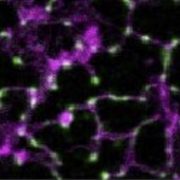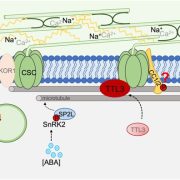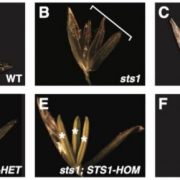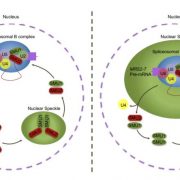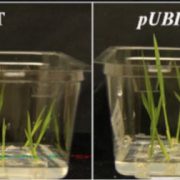MYB30 links the ROS wave to systemic acclimation
Amna Mhamdi
Ghent University, Department of Plant Biotechnology and Bioinformatics, and VIB Center for Plant Systems Biology, 9052 Ghent, Belgium
Address correspondence to [email protected]
Stress signals trigger systemic signaling and acclimation. The propagation of reactive oxygen species (ROS) from the tissue that initially sense the stress stimuli to distant ones or to the entire plant is known as the ROS wave and is key to plant acclimation to adverse conditions (Suzuki et al., 2013). Recent work from the Mittler lab showed that this cell-to-cell communication is dependent on the function of RESPIRATORY BURST OXIDASE HOMOLOG D (RBOHD) and is accompanied by extensive transcriptional reprogramming in a context of stress (Zandalinas et al., 2019, 2020).
The ROS-wave associated transcripts comprise a set of transcription factors including an R2R3 MYB, MYB30. Earlier reports identified MYB30 as a key factor mediating hormone and stress responses in plants (Li et al., 2009; Liao et al., 2017; Mabuchi et al., 2018; Maki et al., 2019; Yan et al. 2020). Yet, the network of MYB30 and roles in ROS and systemic signaling are not known.
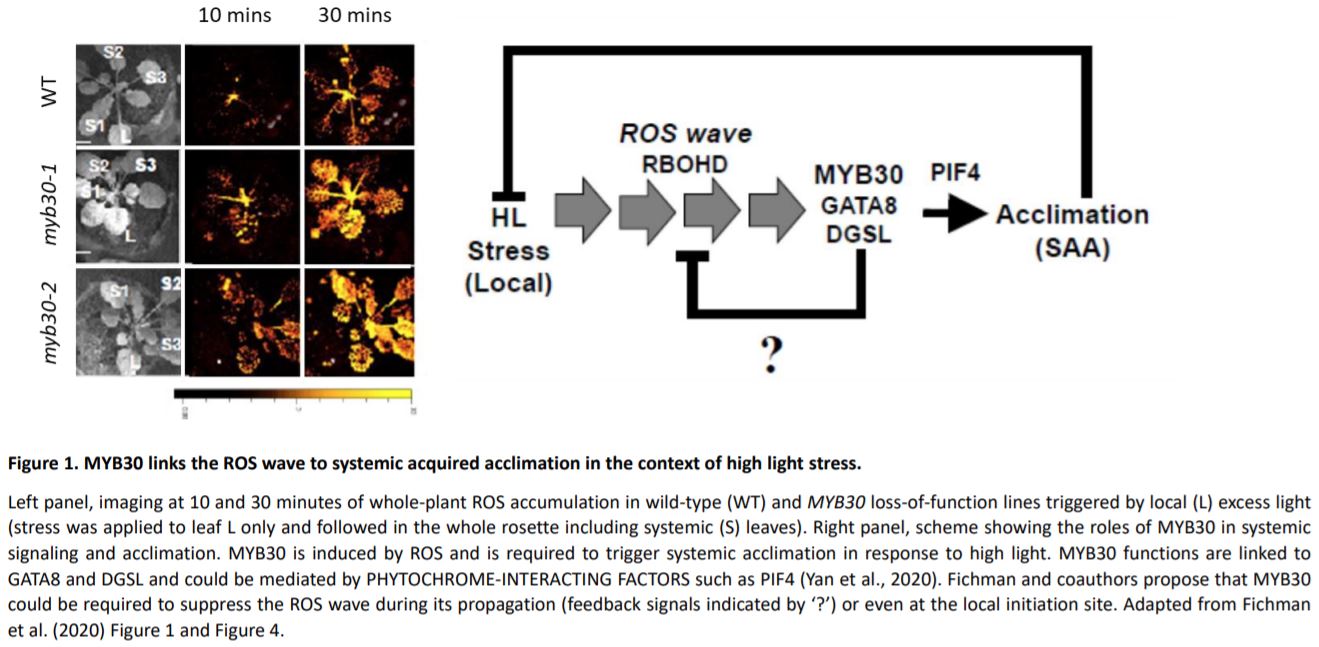 In this issue of Plant Physiology, Fichman et al. (2020) determined the interactions between MYB30, the ROS wave, and systemic acquired acclimation in Arabidopsis (Arabidopsis thaliana). When subjected to high light, the myb30 mutants display enhanced rates of ROS wave propagation and their local tissues were able to acclimate to the excess light. However, they were unable to mount an acclimation response in their systemic tissues, suggesting that MYB30 is required to couple the ROS wave and systemic acclimation (Figure 1). These phenotypes were specific to excess light, as myb30 response to wounding or heat stress were not different from those of the wild type.
In this issue of Plant Physiology, Fichman et al. (2020) determined the interactions between MYB30, the ROS wave, and systemic acquired acclimation in Arabidopsis (Arabidopsis thaliana). When subjected to high light, the myb30 mutants display enhanced rates of ROS wave propagation and their local tissues were able to acclimate to the excess light. However, they were unable to mount an acclimation response in their systemic tissues, suggesting that MYB30 is required to couple the ROS wave and systemic acclimation (Figure 1). These phenotypes were specific to excess light, as myb30 response to wounding or heat stress were not different from those of the wild type.
In response to excess light in local leaves, myb30 plants showed a strong transcriptomic response. However, consistently with the observed defect in systemic acclimation, systemic leaves displayed a much weaker transcriptomic response relative to wild-type plants. Further, the authors identified a subset of genes that were associated with the ROS wave (Zandalinas et al., 2019), induced in the wild type but not myb30 and contained MYB binding motifs in their promoters. Fichman et al. hypothesized that the corresponding proteins (e.g. GATA8 and the GDSL esterase/lipase) may possibly be involved in suppressing the ROS wave and that their functions could be linked to MYB30 (Figure 1). In agreement with this scenario, the authors demonstrated that, similar to MYB30, mutations in GATA8 and GDPL enhance ROS wave propagation and delay or suppress the expression of MYB30, respectively. Additionally, network and co-expression analyses as well as thorough mining of a large number of transcriptomic datasets allowed the authors to identify direct targets of MYB30 that are dependent on RBOHD.
Collectively, the analyses by Fichman and colleagues define MYB30 as a key factor that mediates systemic acquired acclimation to light stress and regulates the intensity of initiation or propagation of the ROS wave. This work sets the ground for future experimental validation that should yield a comprehensive overview of the interactions between MYB30 and targets and reveal new routes for propagation and integration of the ROS wave that convey specificity to the systemic response.
References
Li L, Yu X, Thompson A, Guo M, Yoshida S, Asami T, ChoryJ, Yin Y (2009) Arabidopsis MYB30 is a direct target of BES1 and cooperates with BES1 to regulate brassinosteroid-induced gene expression. Plant J 58, 275–286
Liao C, Zheng Y, Guo Y (2017) MYB30 transcription factor regulates oxidative and heat stress responses through ANNEXIN-mediated cytosolic calciumsignaling in Arabidopsis. New Phytol. 216, 163–177
Mabuchi K, Maki H, Itaya T, Suzuki T, Nomoto M, Sakaoka S, Morikami A, Higashiyama T, Tada Y, Busch W, Tsukagoshi H (2018) MYB30 links ROS signaling, root cell elongation, and plant immune responses. Proc Natl Acad Sci USA 115, E4710-4719
Maki H, Sakaoka S, Itaya T, Suzuki T, Mabuchi K, Amabe T, Suzuki N, Higashiyama T, Tada Y, Nakagawa T, Morikami A, Tsukagoshi H (2019) ANAC032 regulates root growth through the MYB30 gene regulatorynetwork. Sci. Rep. 9:,11358
Suzuki N, Miller G, Salazar C, Mondal HA, Shulaev E, Cortes DF, Shuman JL, Luo X, Shah J, Schlauch K, Shulaev V, Mittler R (2013) Temporal-spatial interaction between reactive oxygen species and abscisic acid regulates rapid systemic acclimation in plants. Plant Cell. 25, 3553–3569
Yan Y, Li C, Dong X, Li H, Zhang D, Zhou Y, Jiang B, Peng J, Qin X, Cheng J, Wang X, Song P, Qi L, Zheng Y, Li B, Terzaghi W, Yang S, Gao Y, Li J (2020) MYB30 is a keynegative regulator of Arabidopsis photomorphogenic development that promotes PIF4 and PIF5 protein accumulation in the light. Plant Cell. doi: 10.1105/tpc.19.00645
Zandalinas SI, Fichman Y, Devireddy AR, Sengupta S, Azad RK, Mittler R (2020) Systemic signaling during abiotic stress combination in plants. Proc Natl Acad Sci USA 117,13810-13820.
Zandalinas SI, Sengupta S, Burks D, Azad RK, Mittler R (2019) Identification and characterization of a core set of ROS wave-associated transcripts involved in the systemic acquired acclimation response of Arabidopsis to excess light. Plant J. 98, 126–141


